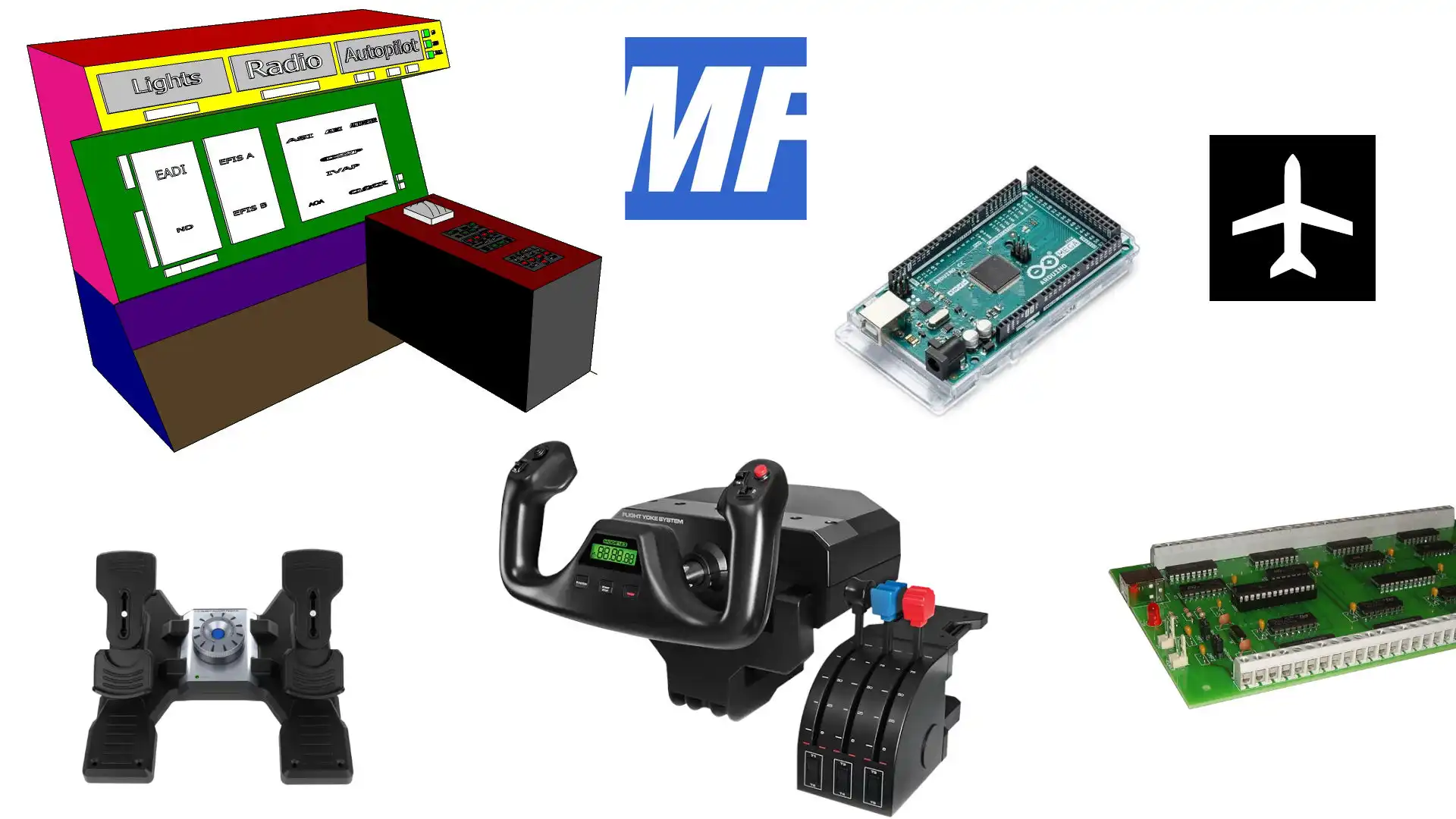My Learjet 45 Home Cockpit (63 posts)
28/03/2023
Version 2 Simulator Structure [Versione in italiano]
by Marco Lamanna
I think the time has come to update the information on how my Version 2 simulator is formed, always remembering that I am following a low cost philosophy.
Some things have changed from the previous version, even if the base has remained the same.
For example, I introduced the use of Mobiflight, an excellent open source system for managing buttons, eliminating the use of a keyboard interface card.
I changed software for managing the Glass Cockpit, using Air Manager (commercial software) to replace open source software that is a bit dated and not very customizable.
So, starting today, I will start a series of posts to describe the different hardware and software components, purchased and home-made, that make up the current version of my simulator, which is always in Work in progress.
So let's start with an introductory post, for a quick summary of the different components, waiting to get to specific posts in case more details are needed.
The system consists of two computers connected to the network, the main one for the Microsoft FSX Gold Edition simulator and the secondary one for the Glass Cockpit managed by Air Manager.
The visual part of the simulator is managed by 3 Full Hd 16:9 monitors connected to two graphics cards of the main computer, managed by the SoftTh software.
The glass cockpit is managed by two 4:3 monitors connected to the secondary pc.
Yoke, pedals and throttle are Logitech instruments, the same for the radio panel, the autopilot and various switches (lights, landing gear, battery...).
Everything else is managed by buttons that are interfaced to the simulator using an Arduino MEGA board on which the Mobiflight firmware is installed.
All the LEDs that are not managed by commercial components are interfaced to the simulator via the OpenCockpits USBOutputs board, programmed in SIOC language and compatible with FSUIPC.
Finally, the audio system is managed by a small 5+1 surround amplifier, to which I connected 3 speakers (2 front side + central) and the subwoofer.
In the next posts we will start by detailing the different components, seeing how they have been used in my current setup
Stay tuned...
